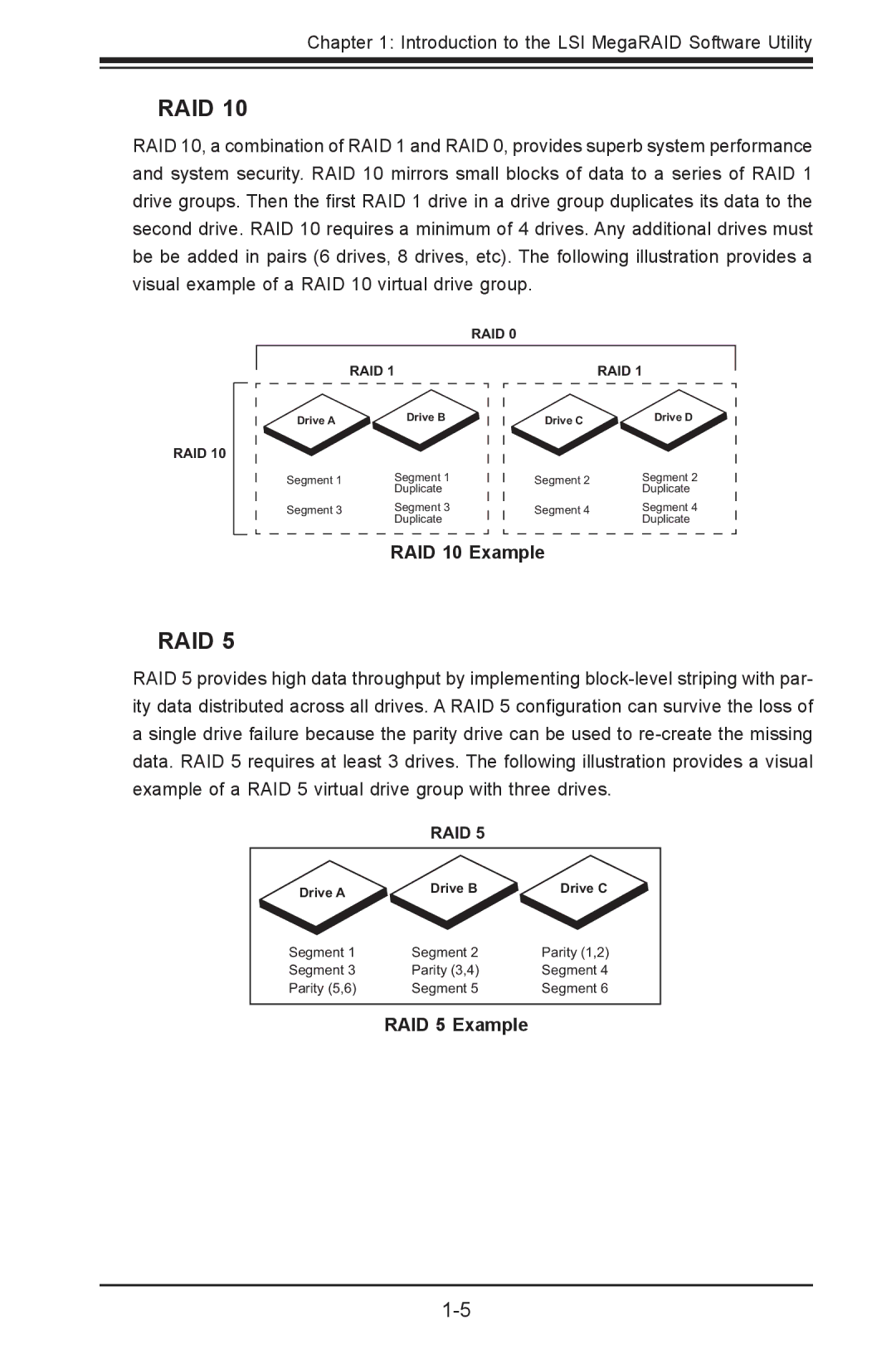
Chapter 1: Introduction to the LSI MegaRAID Software Utility
RAID 10
RAID 10, a combination of RAID 1 and RAID 0, provides superb system performance and system security. RAID 10 mirrors small blocks of data to a series of RAID 1 drive groups. Then the first RAID 1 drive in a drive group duplicates its data to the second drive. RAID 10 requires a minimum of 4 drives. Any additional drives must be be added in pairs (6 drives, 8 drives, etc). The following illustration provides a visual example of a RAID 10 virtual drive group.
RAID 10
RAID 0
| RAID 1 |
| RAID 1 |
Drive A | Drive B | Drive C | Drive D |
Segment 1 | Segment 1 | Segment 2 | Segment 2 |
| Duplicate |
| Duplicate |
Segment 3 | Segment 3 | Segment 4 | Segment 4 |
| Duplicate |
| Duplicate |
RAID 10 Example
RAID 5
RAID 5 provides high data throughput by implementing
RAID 5
Drive A | Drive B | Drive C |
Segment 1 | Segment 2 | Parity (1,2) |
Segment 3 | Parity (3,4) | Segment 4 |
Parity (5,6) | Segment 5 | Segment 6 |
